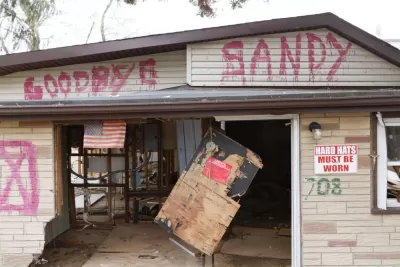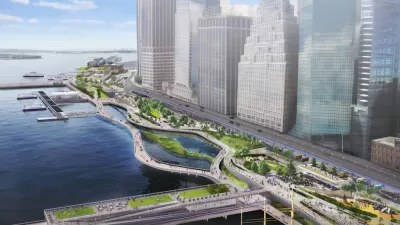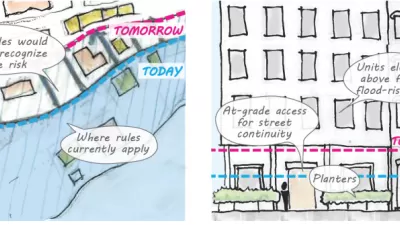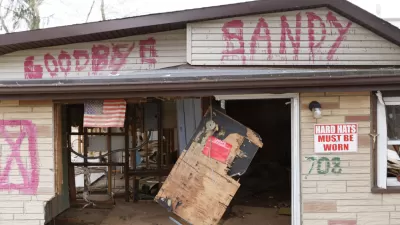More and more New Yorkers will face the prospect of encroaching seas in the coming decades, and the unwanted choice of whether to stay or to go.

According to an article by Ilana Cohen, managed retreat has become a de facto part of life in certain areas of New York City.
"Though not all residents have been presented with equal choices in the matter, many on the city's waterfront have voluntarily participated in government-funded home buyout programs, abandoning their longtime residences to seek higher ground."
The home buyout option is available through the city's Build it Back program, "which seeks to support Sandy-impacted residents with their recovery needs by working with them directly to help repair, rebuild, and elevate their homes—or, when necessary, to relocate entirely."
Also according to the article, some local residents say the city's response to the flood risk has lacked a comprehensive plan, and others are choosing to stay, despite the dire reports of the expected impact of sea-level rise in coastal stretches of the city.
FULL STORY: In New York City, ‘Managed Retreat’ Has Become a Grim Reality

Manufactured Crisis: Losing the Nation’s Largest Source of Unsubsidized Affordable Housing
Manufactured housing communities have long been an affordable housing option for millions of people living in the U.S., but that affordability is disappearing rapidly. How did we get here?

Americans May Be Stuck — But Why?
Americans are moving a lot less than they once did, and that is a problem. While Yoni Applebaum, in his highly-publicized article Stuck, gets the reasons badly wrong, it's still important to ask: why are we moving so much less than before?

Using Old Oil and Gas Wells for Green Energy Storage
Penn State researchers have found that repurposing abandoned oil and gas wells for geothermal-assisted compressed-air energy storage can boost efficiency, reduce environmental risks, and support clean energy and job transitions.

Updating LA’s Tree Rules Could Bring More Shade to Underserved Neighborhoods
A new USC study finds that relaxing Los Angeles’ outdated tree planting guidelines could significantly expand urban tree canopy and reduce shade disparities in lower-income neighborhoods, though infrastructure investments are also needed.

California's Canal Solar Projects Aim to Conserve Resources and Expand Clean Energy
California’s Project Nexus has begun generating electricity from solar panels installed over irrigation canals, with researchers and state agencies exploring statewide expansion to conserve water and boost clean energy production.

HHS Staff Cuts Gut Energy Assistance Program
The full staff of a federal program that distributes heating and cooling assistance for low-income families was laid off, jeopardizing the program’s operations.
Urban Design for Planners 1: Software Tools
This six-course series explores essential urban design concepts using open source software and equips planners with the tools they need to participate fully in the urban design process.
Planning for Universal Design
Learn the tools for implementing Universal Design in planning regulations.
Heyer Gruel & Associates PA
City of Moreno Valley
Institute for Housing and Urban Development Studies (IHS)
City of Grandview
Harvard GSD Executive Education
Salt Lake City
NYU Wagner Graduate School of Public Service
City of Cambridge, Maryland





























